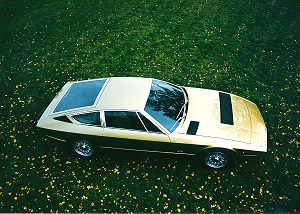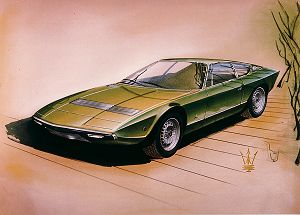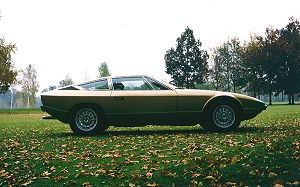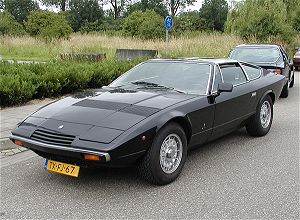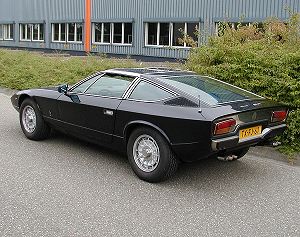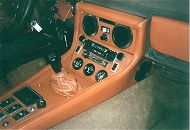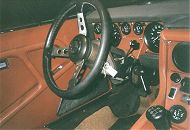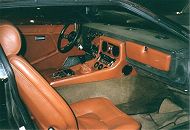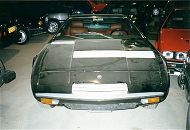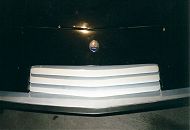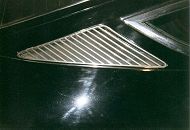
"...a wind of change." |
 |
||
|
|
|||
|
The Khamsin was first seen on the Bertone stand at the Salone di Torino in 1972. The following year it was again displayed on the Bertone stand at the Paris Motor Show, this time carrying the Maserati badge. It did not go into full production until 1974. |
|||
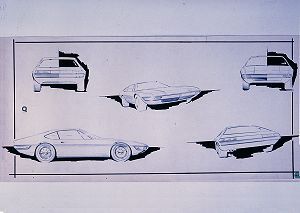 |
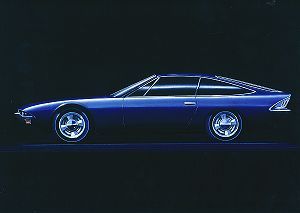 |
Preparatory designs and sketches of the Maserati Khamsin by the design studio of Carrozzeria Bertone. |
The press release from Bertone for the 1972 Turin Motor Show: |
|
As previously anticipated at the Turin Motor Show the new "Maserati" model will be exibited at the Bertone stand. |
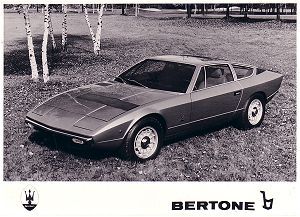 |
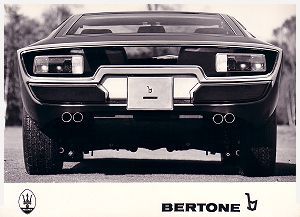 |
|
Official photographs of the prototype Maserati Khamsin issued by Carrozzeria Bertone: note the original rear bumper and tail-light design, modified when the Khamsin went into full production. |
|
The interior of the Khamsin, with seating finished in leather, afforded excellent comfort for the driver and front passenger but headroom and legroom in the rear was restricted. There was ample luggage space, with easy access via the tail gate, mainly due to the twin fuel tanks with single fuel filler on the right-hand side and the spare tyre being stored under the front radiator. The dashboard had excellent instrumentation and controls with speedometer, rev counter, oil pressure gauge, oil temperature gauge, water temperature gauge, voltmeter, fuel gauge and a variety of rocker switches and warning lights, including one for the braking system. |
|||
The Khamsin incorporated many interesting features from Citroën's technical department, including a sophisticated hydaulically power-assisted speed-related steering system, a high pressure (2500 psi from an engine driven pump) hydraulic braking system and clutch. Ask any Khamsin owner and they'll tell you that; "it's a great car to drive but the brakes need a little getting used to!" |
|||
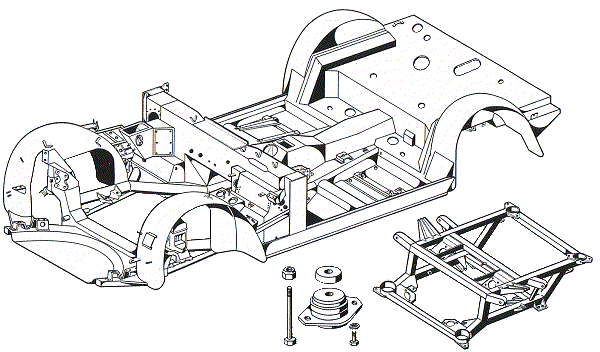 | |
| The tubular and sheet metal chassis, rear subframe and subframe vibration dampers | |
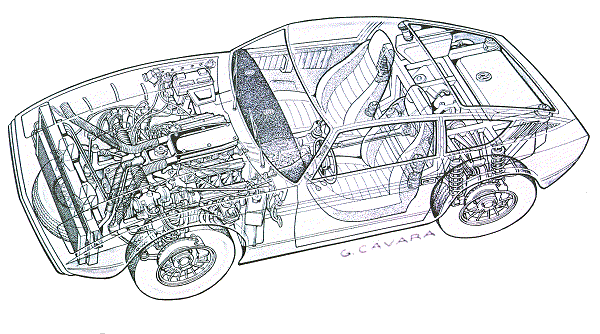 | |
| X-ray view of the Khamsin | |
If ever a supercar, and the Khamsin was indeed a 'super car', was produced at the wrong time, then surely the Maserati Khamsin was it. Launched at a time when the then owners, Citroën, were about to abandon Maserati, at a time of an energy crisis which saw a huge drop in demand for such gas guzzling V8s and at a time of an unsure future for the 'Casa' which left little opportunity for further development, the Khamsin never had the opportunity of achieving the success, in terms of numbers produced, it merited. |
|||
The Lipperts' Khamsin Gallery |
|
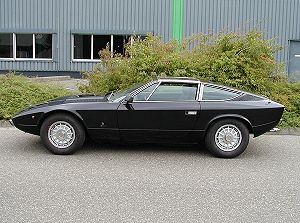 |
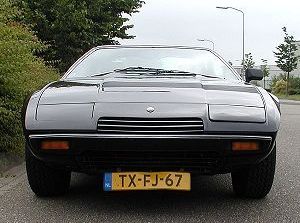 |
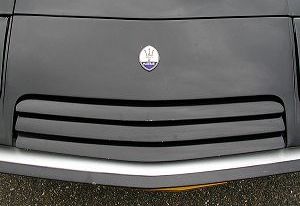 |
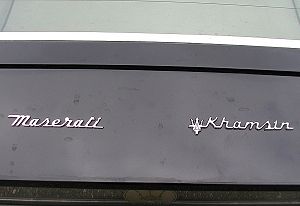 |
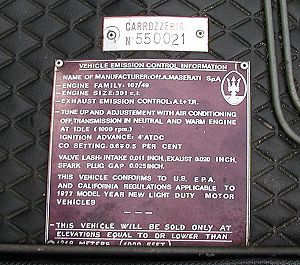 |
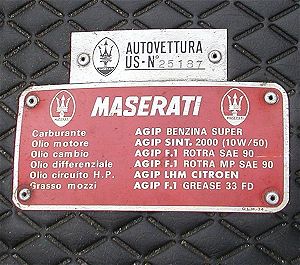 |
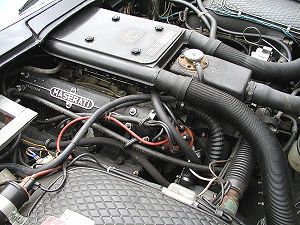 |
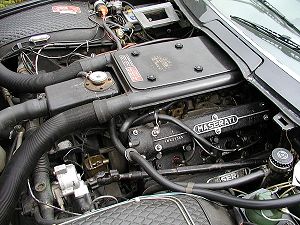 |
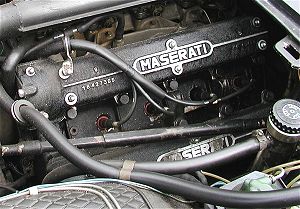 |
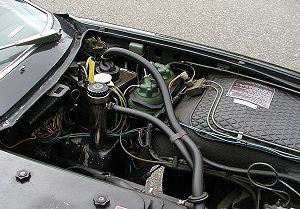 |
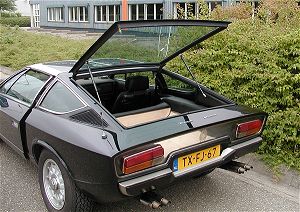 |
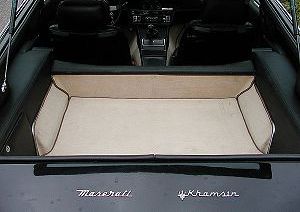 |
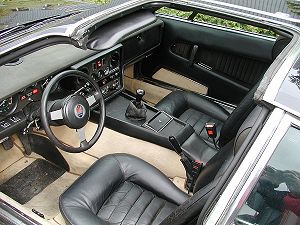 |
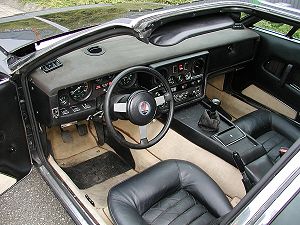 |
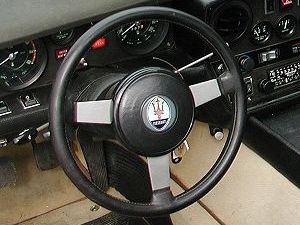 |
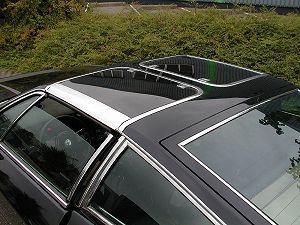 |
| George's car is the later version with the padded steering wheel, the car was converted to a 'T-top' in the US. | |
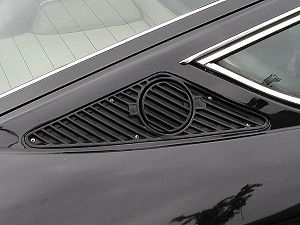 |
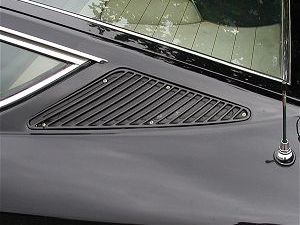 |
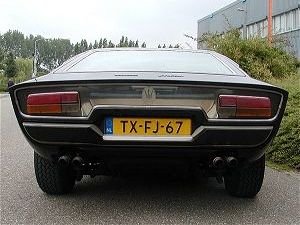 |
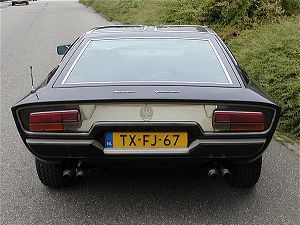 |
| The glass rear panel with the etched Maserati badge. | |
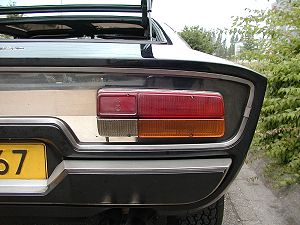 |
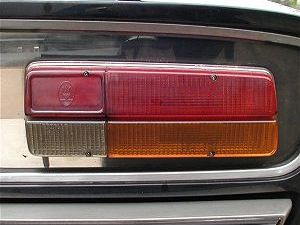 |
| Note the Maserati badge on the original rear light cluster. | |
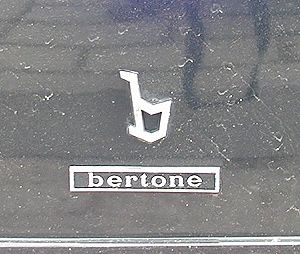 |
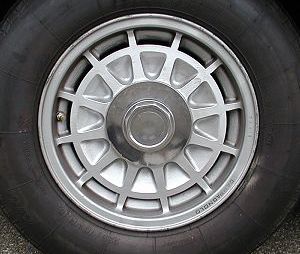 |
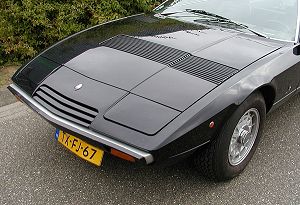 |
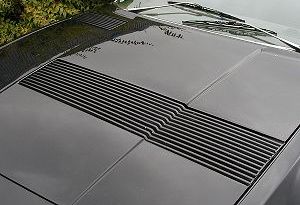 |
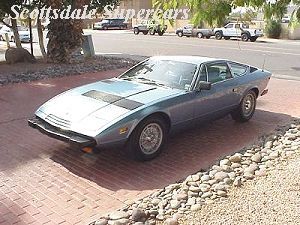 |
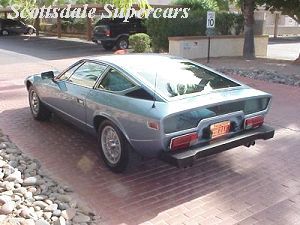 |
| Photos courtesy of Scottsdale Supercars. On this model note the special bumpers, rear glass panel and rear light cluster treatment for the US market. | |
 |
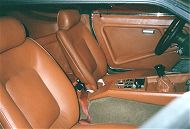 |
 |
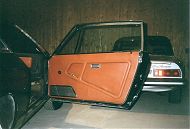 |
 |
| And in case you ever wondered what the Khamsin would look like with symmetric louvres! | |
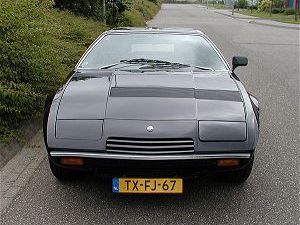 ASYMMETRIC! |
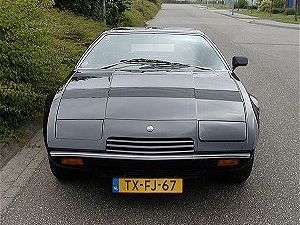 SYMMETRIC! |
| "Enrico - Your site was helpful when I was researching my purchase of a 1977 Black 5-speed Khamsin. Here are some pics. Jordan." | |
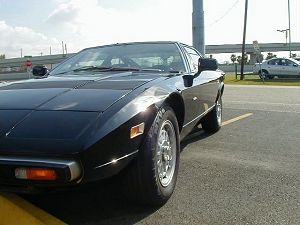 |
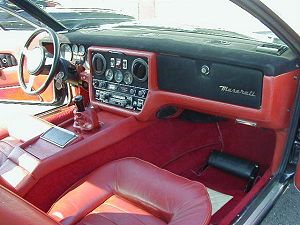 |
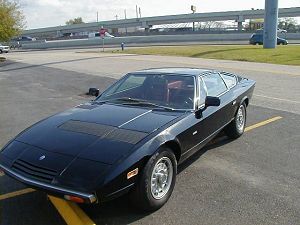 |
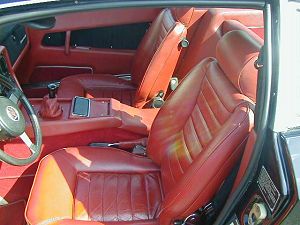 |
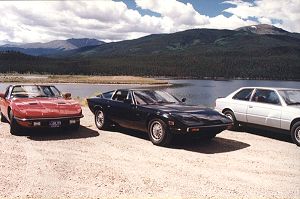 My Khamsin at the Maser Miglia in Colorado. |
|
| TECHNICAL DATA - TIPO 120 | |
| Body type | 2-door two plus two coupé |
| Production years | From 1973 to 1982 |
| Engine | Front engined V8 cylinder @ 90° |
| Bore and stroke | 93.6 mm X 89 mm |
| Engine capacity | 4930 cc |
| Compression ratio | 8.5:1 |
| Maximum power | 320 bhp @ 5500 rpm |
| Distribution | Four overhead camshafts, two valves per cylinder. |
| Induction system | No 4 twin-choke down-draught 42 DCNF Weber carburettors. |
| Ignition | Single with distributor. |
| Lubrification | Forced with delivery and return pumps. |
| Transmission | Rear wheel drive. |
| Clutch | Single dry plate with hydraulic control. |
| Gearbox | Manual ZF 5-speed and reverse or Borg Warner 3-speed automatic. |
| Chassis | Body integral with frame and support-chassis. |
| Front suspension:- | Independent wheel with coil-springs, telescopic shock absorbers and anti-roll bar. |
| Rear suspension:- | Independent wheel with twin coil-springs and twin telescopic shock absorbers. |
| Brakes | Hydraulically operated and assisted ventilated disc brakes. |
| Wheelbase | 2550 mm |
| Wheel tracks | Front 1440 mm Rear 1468 mm |
| Tyres | Front:- 215x70 VR15 Rear:- 215x70 VR15 |
| Dry weight | 1530 kg |
| Overall length | 4400 mm |
| Overall width | 1804 mm |
| Overall height | 1140 mm |
| Maximum speed | 275 kph (171 mph) |
| Models constructed | 430 |
| AN ORIGINAL FACTORY BROCHURE | |
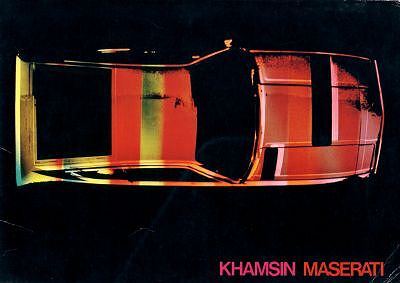 |
|
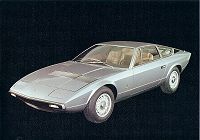 |
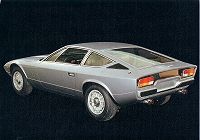 |
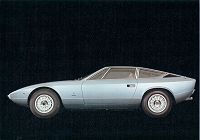 |
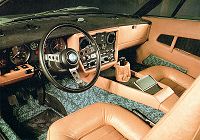 |
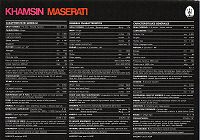 Dr. George Lipperts' original factory brochure/folder containing four colour photos of the exterior and interior of the Khamsin plus a sheet containing full technical specification in Italian, English and French. |
|
 |
|
|
To enter Enrico's Maserati Pages CLICK HERE! Copyright: Enrico's Maserati Pages - © 2003-2004. All rights reserved. | |
